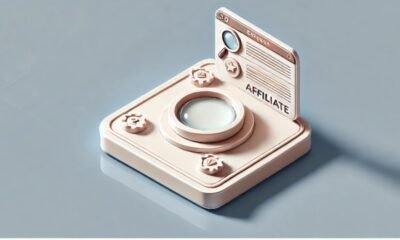Blog
Breathe Easy: The Complete Guide to Using a Humidifier

Air quality plays a significant role in our comfort and health, especially during dry seasons or in air-conditioned environments. One simple yet powerful tool that can dramatically improve indoor air quality is a humidifier. This device increases moisture levels in the air, preventing dryness that can cause irritation in the skin, nose, throat, and lips. But a humidifier isn’t just about comfort—it can also improve sleep quality, relieve cold symptoms, and even protect your furniture and plants. Let’s explore everything you need to know about humidifiers, from their benefits to how to use and maintain them properly.
What Is a Humidifier?
A humidifier is an electronic device designed to add moisture to the air, increasing humidity levels in enclosed spaces. It works by releasing water vapor or steam into the atmosphere. The goal is to maintain an optimal humidity level—usually between 30% and 50%. When humidity drops too low, it can cause discomfort and even health issues. By balancing the air’s moisture content, a humidifier creates a more comfortable and healthy living environment.
Read More: Monstera Borsigiana: A Guide to Growing and Caring for This Stunning Houseplant
Types of Humidifiers
There are several types of humidifiers, each designed for different spaces and preferences. Cool mist humidifiers use a fan to evaporate water, providing cool moisture ideal for hot climates. Warm mist humidifiers heat water before releasing it as steam, perfect for colder seasons. Ultrasonic humidifiers use vibrations to produce fine mist, operating quietly and efficiently. Evaporative humidifiers rely on natural evaporation using a wick filter, while whole-house humidifiers integrate into HVAC systems for large-scale humidity control.
Benefits of Using a Humidifier
A humidifier offers numerous health and environmental benefits. It helps prevent dry skin, reduces nasal congestion, soothes sore throats, and relieves allergy symptoms. Moist air can also reduce snoring and promote better sleep. Moreover, maintaining proper humidity prevents wood furniture, floors, and musical instruments from cracking. Even houseplants benefit from the added moisture, thriving in a balanced indoor environment.
How Humidity Affects Health
Low humidity can lead to a host of health issues—dry skin, chapped lips, itchy eyes, and irritated sinuses. It can also make you more susceptible to infections since dry nasal passages are less effective at trapping viruses. Conversely, excessive humidity can promote mold growth and dust mites. The right humidity balance not only prevents illness but also supports overall respiratory health.
Ideal Humidity Levels for Your Home
The perfect indoor humidity level typically falls between 30% and 50%. In winter, humidity tends to drop because of heating systems, so humidifiers are especially useful during this time. Use a hygrometer to measure humidity in your home and adjust your device accordingly. Keeping this balance reduces discomfort and prevents potential problems like condensation on windows or mold growth.
When You Should Use a Humidifier
Humidifiers are beneficial year-round but are most useful in dry climates or during winter months when heaters remove moisture from the air. They’re also great during cold and flu season, helping to soothe coughing and congestion. People living at high altitudes or in air-conditioned environments can use them to maintain skin and respiratory comfort.
Choosing the Right Humidifier for Your Needs
Selecting the right humidifier depends on your room size, climate, and personal preferences. For small rooms, a portable ultrasonic or cool mist model works well. For large spaces or entire homes, whole-house humidifiers are more efficient. Consider features like automatic humidity sensors, adjustable mist levels, and noise levels, especially if you plan to use it while sleeping.
Proper Placement of a Humidifier
Placement plays an important role in maximizing your humidifier’s effectiveness. Always position it on a flat, elevated surface like a table or nightstand—away from walls and electronics. Ensure there’s enough airflow around the unit for even moisture distribution. Avoid placing it directly on carpets or near heat sources, as that could cause damage or reduce performance.
How to Clean and Maintain a Humidifier
Regular cleaning is crucial for keeping your humidifier safe and effective. Dirty water tanks can breed mold and bacteria, which then circulate through the air. Empty and rinse the tank daily, and perform a deep cleaning every few days using a vinegar-water solution. Always follow the manufacturer’s guidelines for filter replacement and maintenance to ensure optimal performance.
Common Mistakes to Avoid with Humidifiers
Many users make simple mistakes that reduce a humidifier’s effectiveness. Over-humidifying a room can cause dampness and mold. Neglecting to clean the device leads to bacterial buildup. Using tap water instead of distilled water can result in mineral deposits or “white dust.” Always monitor humidity levels and follow best practices for safe operation.
Humidifiers and Sleep Quality
Dry air can make sleeping uncomfortable by irritating your throat and nasal passages. A humidifier helps you breathe more easily at night, reducing snoring and congestion. Many people notice improved sleep quality after regular use. Some models even include aromatherapy features—you can add essential oils like lavender or eucalyptus for a calming nighttime experience.
Humidifiers for Babies and Children
Babies are particularly sensitive to dry air. A humidifier in the nursery can help prevent dry skin, nasal irritation, and coughs. Cool mist humidifiers are recommended for children’s rooms since they’re safe and effective without the risk of burns. Always place the device at a safe distance from the crib and ensure it’s cleaned regularly.
The Role of Humidifiers in Winter Comfort
During winter, heating systems make indoor air extremely dry, leading to static electricity, itchy skin, and respiratory irritation. A humidifier counteracts this dryness, keeping you comfortable and healthy. It also helps preserve furniture, musical instruments, and wooden fixtures that might crack or shrink due to lack of moisture.
Humidifiers for Plants and Indoor Gardens
Many indoor plants, especially tropical varieties, thrive in humid environments. Dry air can cause leaf curling, browning, or slowed growth. A humidifier maintains the moisture levels plants need, especially during winter when the air becomes dry. Place the humidifier near your plants for best results, but ensure proper airflow to prevent mold.
Energy Efficiency and Modern Humidifier Features
Today’s humidifiers come with smart features like humidity sensors, auto shut-off, and energy-efficient technology. These functions maintain optimal humidity without wasting electricity or water. Some even integrate with home automation systems, allowing you to monitor and control humidity from your smartphone. Investing in a modern model ensures convenience and long-term savings.
Potential Drawbacks of Humidifiers
While humidifiers are beneficial, improper use can cause problems. Over-humidified air promotes mold, dust mites, and unpleasant odors. Dirty water tanks can release bacteria into the air, worsening allergies. Always keep your unit clean and monitor humidity levels. With proper care, these issues are easily preventable.
Conclusion
A humidifier is more than just a comfort device—it’s an essential tool for maintaining a healthy indoor environment. By adding the right amount of moisture to the air, it prevents dryness, promotes better sleep, supports respiratory health, and protects your home. Whether you live in a dry climate or face harsh winter air, a humidifier can make a world of difference. With proper maintenance and thoughtful use, you’ll breathe easier, sleep better, and enjoy a more comfortable home all year round.
Read More: Honeywell Humidifiers: A Comprehensive Guide to Comfort and Health
FAQs
1. How often should I clean my humidifier?
Clean your humidifier every 2–3 days to prevent mold and bacteria buildup. Empty and dry the tank daily if used frequently.
2. Can I use tap water in my humidifier?
It’s best to use distilled or demineralized water to prevent mineral buildup and white dust.
3. What humidity level should I maintain indoors?
Aim for 30–50% relative humidity for optimal comfort and health.
4. Is it safe to use a humidifier overnight?
Yes, most humidifiers are safe for overnight use, especially models with automatic shut-off and humidity sensors.
5. Can a humidifier help with allergies?
Yes, maintaining proper humidity can relieve allergy symptoms by keeping nasal passages moist and reducing dust irritation.
-

 Tech1 year ago
Tech1 year agoHow to Use a Temporary Number for WhatsApp
-

 Business2 years ago
Business2 years agoSepatuindonesia.com | Best Online Store in Indonesia
-

 Social Media1 year ago
Social Media1 year agoThe Best Methods to Download TikTok Videos Using SnapTik
-

 Technology1 year ago
Technology1 year agoTop High Paying Affiliate Programs
-

 Tech9 months ago
Tech9 months agoUnderstanding thejavasea.me Leaks Aio-TLP: A Comprehensive Guide
-

 FOOD11 months ago
FOOD11 months agoHow to Identify Pure Desi Ghee? Ultimate Guidelines for Purchasing Authentic Ghee Online
-

 Instagram3 years ago
Instagram3 years agoFree Instagram Auto Follower Without Login
-

 Instagram3 years ago
Instagram3 years agoFree Instagram Follower Without Login





















